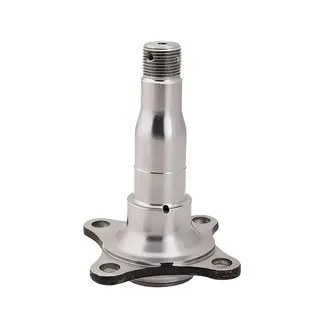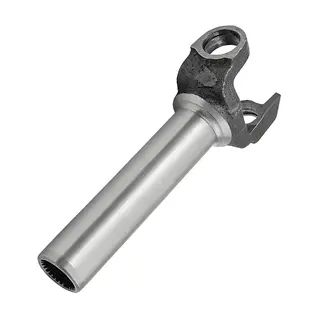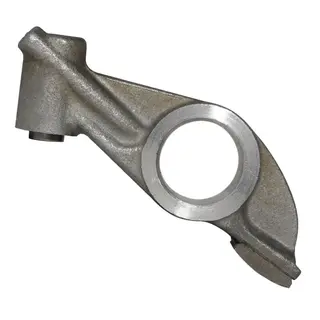In the field of metal processing, pre-heating for forging is a crucial step. It not only affects the subsequent processing performance of the metal billet but is also directly related to the quality of the final product and production efficiency. Today, let us take an in-depth look at the matter of pre-heating for forging, and see how, through scientific and reasonable heating specifications, one can avoid various defects and improve production efficiency.
Before forging, metal billets must undergo heating treatment to reach a certain temperature range, so as to facilitate the subsequent forging process. However, the heating process is not simply raising the temperature, but must strictly follow certain heating specifications. This is because, if heating is improper, it can easily cause various defects in the billets, affecting product quality, and even leading to production accidents.
Heating specifications refer to the regulations on the change of furnace temperature and billet temperature with time from the moment the metal billet is loaded into the furnace until the completion of heating. They are usually expressed in the form of temperature-time variation curves, which allow operators to more intuitively understand and implement them. Different metal materials, due to their type, characteristics, and section size, also have different heating specifications in forging production.
The heating process can generally be divided into three stages: preheating, heating, and equalizing.
The preheating stage mainly involves reasonably determining the furnace temperature when charging, in order to avoid thermal stress in the billet caused by excessive temperature differences.
The heating stage focuses on correctly selecting the heating rate, so as to ensure the billet quickly reaches the prescribed initial forging temperature while avoiding defects caused by overly rapid heating.
The equalizing stage ensures the billet temperature is uniform, with an appropriate holding time to make the temperature distribution more even, preparing the billet for subsequent forging.
Heating rate refers to the speed at which the temperature rises during heating, usually referring to the rate of increase of the metal surface temperature. A proper heating rate is crucial for improving production efficiency, reducing fuel consumption, and ensuring product quality.
On the one hand, an excessively high heating rate will cause excessive thermal stress, leading to cracks in the billet. This problem is especially pronounced for billets with poor thermal conductivity and large cross-sections. Therefore, during heating, the heating rate must be reasonably controlled according to the characteristics of the billet, to avoid overly rapid temperature rise.
On the other hand, the heating rate must not be too slow. If it is too slow, production efficiency will be reduced and fuel consumption will increase. Therefore, under the premise of ensuring heating quality, the heating rate should be increased as much as possible, shortening the residence time of billets in the furnace.
Holding is an important step in the heating process. Holding at forging temperature prevents the billet center temperature from being too low, which would cause uneven forging deformation. At the same time, the effect of high-temperature diffusion can make the billet structure more uniform, improve plasticity, and reduce uneven deformation, thereby improving the quality of forgings.
Different metal materials require different holding times. For example, aluminum alloys require longer holding times at forging temperature than general steels. This is because aluminum alloys need more time for strengthening phases to dissolve, to make the structure uniform and improve plasticity. However, for most metal billets, excessively long high-temperature residence times will lead to oxidation, decarburization, alloy element burn-off, and hydrogen absorption. Therefore, high-temperature residence time should be shortened as much as possible, with the principle being “heat through and forge immediately.”
The length of holding time needs to comprehensively consider forging quality and production efficiency. Particularly important is the holding time at the initial forging temperature, for which minimum and maximum holding times are specified.
If the heating process is not properly controlled, billets can easily develop various defects. These defects can be divided into the following categories.
Oxidation: During heating, the metal surface reacts chemically with oxygen in the air to form an oxide layer. The oxide layer increases surface roughness and reduces the strength and toughness of the metal.
Decarburization: Decarburization refers to the phenomenon where the surface carbon of the metal oxidizes at high temperatures, leading to a significantly lower carbon content on the surface than inside. The depth of the decarburized layer depends on steel composition, furnace atmosphere, temperature, and holding time. Heating in an oxidizing atmosphere easily causes decarburization, especially in high-carbon steels and silicon-rich steels. Decarburization reduces strength, fatigue resistance, and wear resistance.
Carburization: Forgings heated in oil furnaces often experience carburization on the surface or part of the surface. The carburized layer may have a carbon content exceeding 2% in some areas. Carburization worsens machinability, making cutting more difficult.
Sulfur penetration, copper penetration, etc.: These defects occur due to furnace atmosphere or impurities, causing other elements to infiltrate the metal surface, altering its chemical composition and properties.
Overheating: Overheating refers to grain coarsening caused by excessively high heating temperatures, overly long residence times within the forging and heat-treatment temperature ranges, or overheating effects. Overheating reduces mechanical properties, especially impact toughness. For general structural steels, overheating can be corrected by normal heat treatment, thus called “unstable overheating.” For alloy structural steels, severe overheating cannot be completely eliminated by ordinary heat treatment, and is called “stable overheating.”
Burning: Burning occurs when heating temperatures are excessively high or residence times in high-temperature zones are too long, allowing oxygen and other oxidizing gases to penetrate grain boundaries, forming low-melting eutectics with iron, sulfur, or carbon. This destroys grain boundary cohesion, drastically reducing plasticity. Severely burned metals crack easily under even light blows, showing transverse cracks during elongation. Burned forgings are generally irrecoverable and must be scrapped.
Insufficient Heating: This refers to the billet interior failing to reach the prescribed heating temperature, leading to uneven forging deformation. Such billets are prone to cracking during forging, compromising product quality.
Thermal Stress: Uneven temperature distribution inside billets produces thermal stress. Excessive thermal stress causes cracks, especially in large-section ingots and billets of poorly conducting high-alloy steels and superalloys. If heating speed is too high at low temperatures, large temperature differences between inside and outside produce excessive thermal stress. When stress exceeds billet strength, radial cracks from the center outward appear, splitting the section.
Structural Stress: Structural stress arises from internal structural changes during heating. If heating rate is too high or temperature distribution is uneven, structural stress increases, leading to billet cracking.
To avoid various defects during the heating process, the following measures should be taken.
Heating specifications should be determined based on the type, characteristics, and cross-sectional dimensions of the metal material. These specifications should include the furnace temperature during the preheating stage, the heating rate during the heating stage, and the holding time during the soaking stage. By adopting scientifically sound heating specifications, various defects that may occur during heating can be effectively avoided.
Controlling the heating speed is key to preventing defects. It is important to avoid excessive temperature stress caused by overly fast heating, while also preventing reduced production efficiency and fuel waste caused by overly slow heating. In actual production, the heating speed should be reasonably controlled within an appropriate range according to the characteristics of the billet.
The length of the holding time should be comprehensively considered in relation to forging quality and production efficiency. While ensuring uniform billet temperature, the holding time should be shortened as much as possible to reduce problems such as oxidation and decarburization. For metal materials like aluminum alloys that require longer holding times, special attention should be given to controlling the duration to prevent excessive holding.
The use of advanced heating equipment and processes can effectively improve heating efficiency and quality. For example, applying a controlled-atmosphere furnace can reduce oxidation and decarburization, while adopting staged heating processes can better control heating speed and temperature distribution, thereby avoiding excessive thermal stress.
During heating, quality inspection should be reinforced to promptly identify and handle potential defects. By regularly checking the billet’s temperature, surface quality, and internal structure, heating specifications can be adjusted in time to ensure the quality of the heating process.
Pre-heating for metal forging is a complex and important process that requires strict adherence to heating specifications, reasonable control of heating rate and holding time, to prevent defects. Through scientific heating specifications and advanced processes, production efficiency can be improved, product quality ensured, and costs reduced. In actual production, heating specifications should be tailored to the characteristics of the metal material, with strengthened quality inspection, to guarantee the quality and efficiency of the heating process.



